Vivo X60 Pro Review
Vivo X60 Pro Review
Another camera contender?
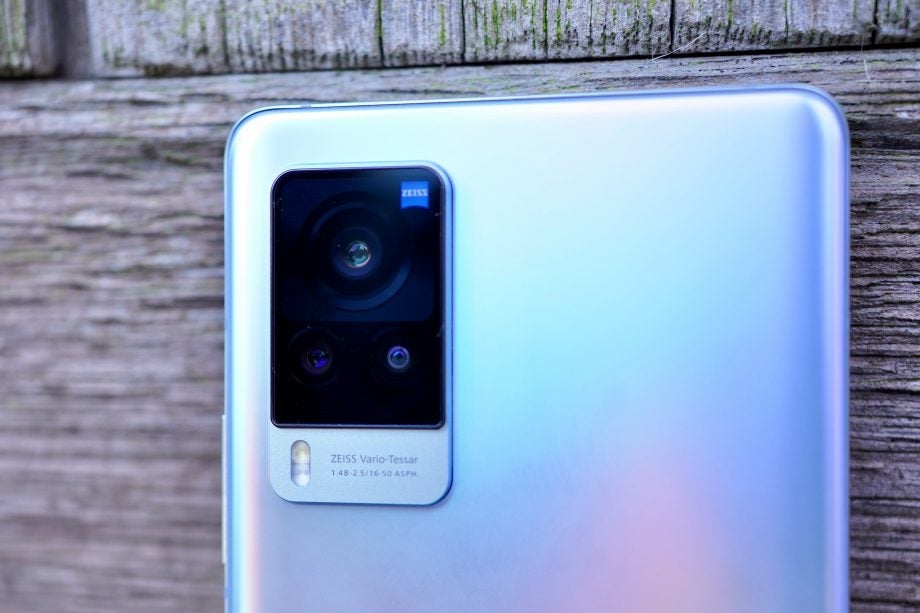

Verdict
There are lingering question marks over its price and availability so I won't be scoring the Vivo X60 Pro yet, but as it stands this is a unique upper-mid-range/entry-flagship phone with a remarkably stable camera, a highly desirable design and solid performance. It isn't the best-specced phone in its class, however, and for all its camera charms it doesn’t take the best photos. As a value proposition, we suspect it’s going to struggle against the altogether more capable OnePlus 9. But for those looking for something a little different in a rather samey field, it’s a sleek and stylish alternative.
Pros
- Super steady gimbal shots
- Sleek design
- Good telephoto camera
Cons
- Both day and night time shots can look overblown
- No wireless charging
Key Specifications
- Review Price: £749
- Gimbal camera
- Snapdragon 870
- 4300mAh battery
- 33w charging
Less than a year on from the Vivo X50 Pro, has Vivo managed to add power and value to its classy, camera-focused upper-mid-range concept with the Vivo X60 Pro?
The Vivo X50 Pro certainly wasn’t lacking for bold ideas, particularly when it came to its novel gimbal-enhanced camera.
But we had one or two concerns over its viability in a particularly competitive area of the market. There are so many best mid-range phone options around now that it can be hard to stand out. Can The X60 Pro hold its own in such a formidable field?
Design and Screen
- Slender design with beautiful satin finish
- One or two disappointing ‘affordable’ concessions
- Big, bright, 120Hz AMOLED
I described last year’s Vivo X50 Pro as “a strikingly pretty phone”, and the Vivo X60 Pro is equally handsome.
It would have been nice to see Vivo advance its design ideas a tad further, in fact. If it weren’t for a few minor details, you might assume they were the same phone. Nevertheless, it’s a lovely piece of kit to have sat on your coffee table.
The X60 Pro is a couple of grams lighter than its predecessor – at 179g, it hits that same sweet spot of a phone that feels premium without weighing you down. It’s a mere slip of a thing at 7.6mm thick, too.
It has the same combination of aluminium body and twin-glass surfaces as seen in previous devices, and those surfaces are also shaped the same. Both front and rear expanses of glass curve off at the edges, the side rails are thin and slightly rounded, and the top and bottom edges flatten out. The top edge even has its own smooth panel, with ‘Professional Photography’ etched onto it.
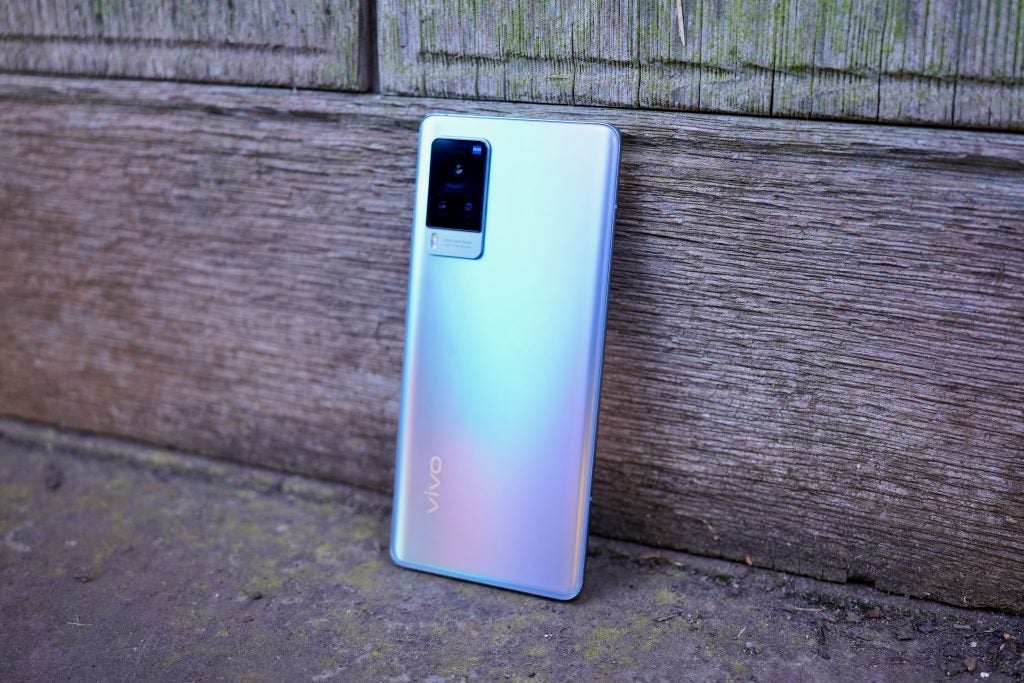
The rear of the phone has that same silky, pearlescent yet matte, finish that wowed us before. Our test model comes in a colour I’d be tempted to call “technicolor dreamcoat”, but which Vivo rather undersells as “Shimmer Blue”. It seems to shift through all of the colours of the rainbow, depending on the angle from which you view it.
Another telltale differentiation is a slightly thicker camera module, which still looks suitably ‘Pro’. More so, in fact, with the addition of Zeiss branding. But we’ll dive into the particulars of that in the following section.
A more obvious departure from last year’s model is in the shift to a centrally mounted selfie camera, similar to Samsung. Which is preferable will be down to personal choice.
There are a couple of points that indicate to the discerning user that this isn’t quite a flagship phone. For one thing, the bottom bezel is ever so slightly thicker than the top bezel. It’s a tiny bit disappointing given the phone’s Pro posturing, but it’s a fairly subtle imbalance all the same.
While we’re on the topic of a slightly less-than-premium build, it’s a shame to see that Vivo hasn’t included an IP rating of any kind. A decent, officially sanctioned level of waterproofing is something we’d really like to see as standard in the £/$/€700+ category.
Another slight letdown is the use of a single bottom-mounted speaker. The OnePlus 9 offers decent stereo speakers for less.
One thing that doesn’t disappoint is the Vivo X60 Pro’s display. Like its predecessor, it’s a 6.56-inch FHD+ AMOLED, which outputs a bright, vibrant picture.
This time, however, Vivo has cranked up the refresh rate from 90Hz to a full 120Hz. That’s a proper flagship spec, and it competes well with the OnePlus 9 and the Samsung Galaxy S21 for fluidity when set to the full 120Hz.
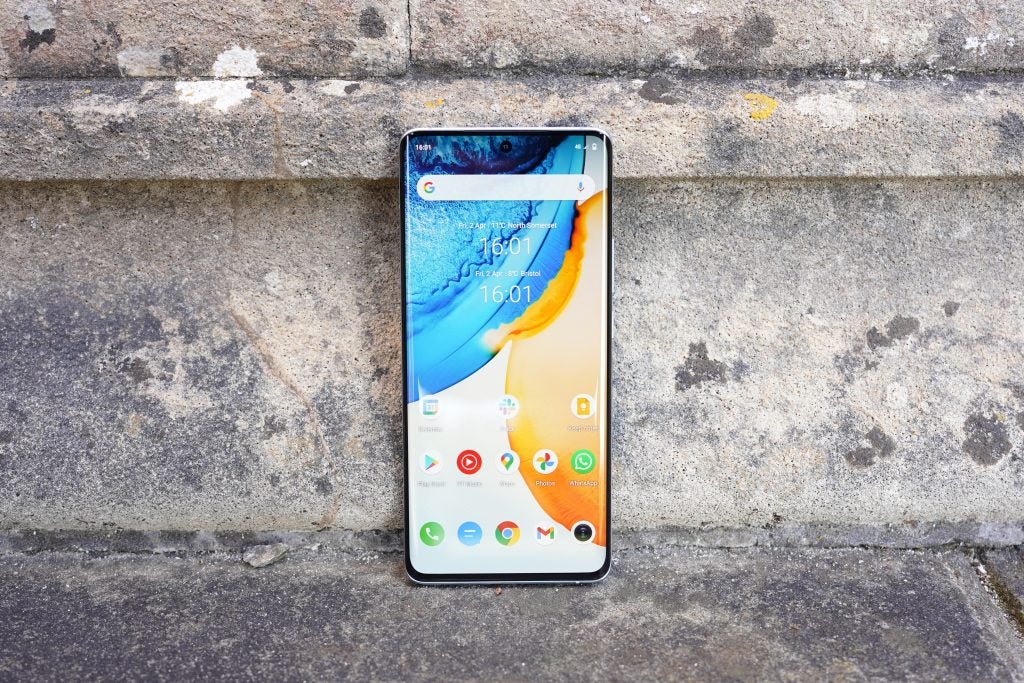
By default this refresh rate is set to Smart Switch, which goes with “the most appropriate screen refresh rate… according to the actual usage scenario”. This isn’t a fully adaptable LPTO display (as you’ll find in the OnePlus 9 Pro and the Samsung Galaxy S21 Ultra), but rather switches between the available 60Hz and 120Hz options to help conserve power.
Camera
- Gimbal offers impressive steadiness, especially with video
- Three consistent sensors, but colours a little OTT
- Telephoto does a good job
Like its predecessor, the Vivo X60 Pro’s headline feature is its 48-megapixel gimbal-assisted wide camera. This time, however, you get a slightly wider f/1.5 aperture, which is unusually large for a smartphone.
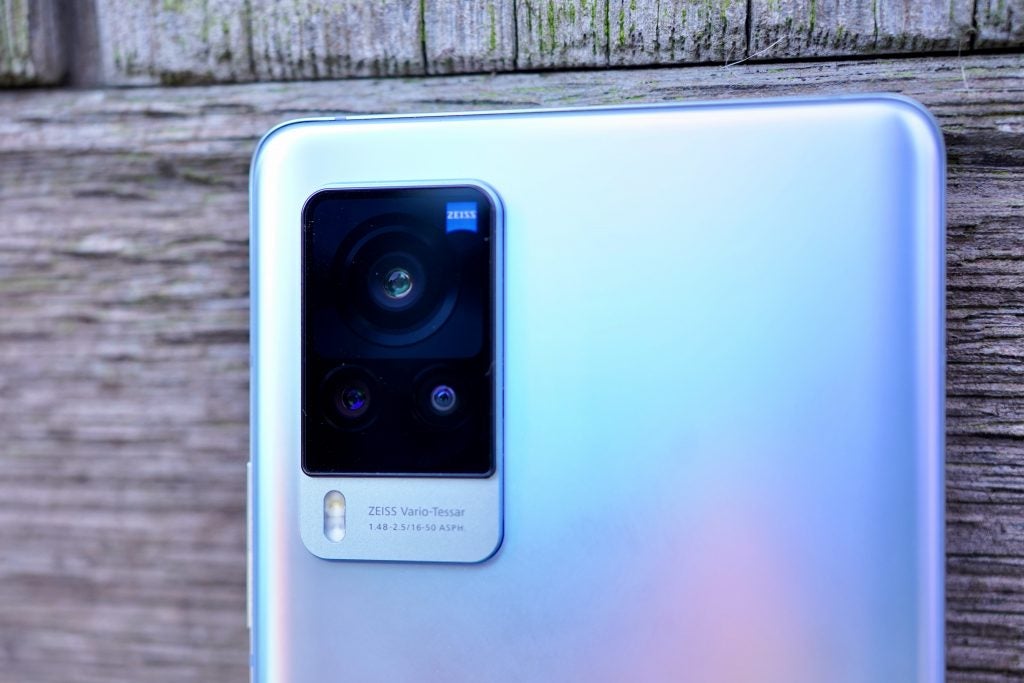
Vivo has also stepped up its game with a new Zeiss partnership in an effort to compete with the best camera phones. The German brand is a respected name in high-end optics, although it hasn’t exactly been shy about putting its name to smartphones in the past, most notably the Nokia X20 and the Sony Xperia 1 III.
While terms such as “Zeiss Imaging quality” and “the famous Zeiss look” might seem a little vague, there are two specific benefits to this co-engineering partnership. One is access to Zeiss’s T* optical coating, which cuts down on reflections and other visual distortions. The other is a Portrait mode that simulates Zeiss’s Biotar lens design for a more pronounced bokeh effect.
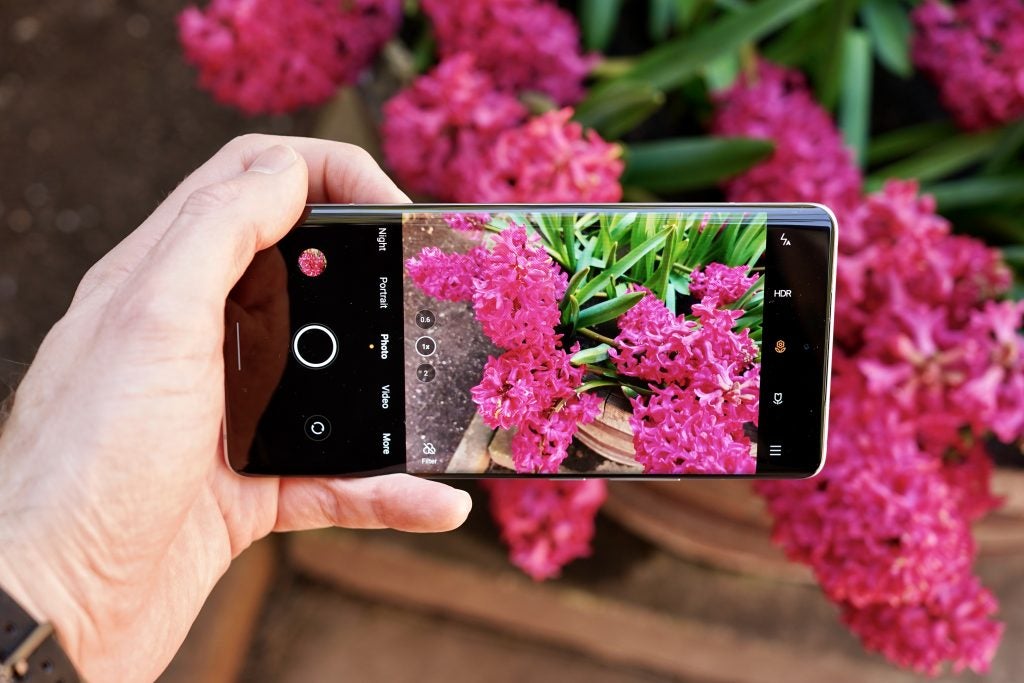
However, the real point of interest here is a second-generation double-ball suspension mount for its main camera, and that’s all Vivo. This system steadies shots to a far greater degree than your average OIS system, physically moving the sensor in the opposite direction along five axes whenever movement is detected.
Using the X60 Pro camera feels reassuringly solid. There’s still a slight sense of wallowiness when you shift the viewfinder, but it isn’t too pronounced this time around, and you grow accustomed to the dampened effect.
The benefits are particularly noticeable when you shoot video in ‘Super anti-shake’ mode, where even breaking into a slow jog didn’t seem to disturb my footage all that much. It felt spookily still at times, although you will have to put up with a cropped picture in this ramped up mode. You won’t be able to capture at any higher than 1080p in either this or Standard stabilisation mode.
This gimbal system alone arguably justifies the ‘Professional Photography’ boast scrawled on the top of the X60 Pro. Gimbal systems are indeed something the pros use, and are a rare provision in any smartphone. But it doesn’t quite make the Vivo X60 Pro a top-level contender when it comes to general shooting.
I took the Vivo X60 Pro out for a day’s shooting with the OnePlus 9 and the OnePlus 9 Pro, and the comparison proved instructive. The X60 Pro will likely fall in between those two phones on pricing, and OnePlus (a sister brand to Vivo) is another manufacturer that’s recently attached itself to a camera industry legend (this time Hasselblad) in a bid for photographic legitimacy.

It was immediately evident that the X60 Pro punches up colours way more than both the OnePlus 9 and OnePlus 9 Pro, giving shots an excessively bright, slightly artificial look. On a sunny spring day, it tended to top the OnePlus 9 for detail and displayed a little less sharpening than the OnePlus 9 Pro.


One particular shot of some yellow tulips displayed less noise on the Vivo than the OnePlus phones, but a corresponding lack of detail, like everything had been smoothed out more aggressively. On another occasion, Zeiss’s T* optical coating came into play when shooting into the sun. Where the OnePlus phones suffered from distracting lens flare effects, the Vivo had none.
After impressing with the X50 Pro, Vivo’s gimbal-driven Night mode (which enables long, shake-free shutter times) has rather fallen behind the pack. Low-light snaps are certainly much brighter on the X60 Pro than the OnePlus 9, the OnePlus 9 Pro, the iPhone 12 mini, and the Oppo Find X3 Pro. But there’s also an uncanny, overblown look to them, and I far preferred the more sophisticated and natural looks of all of the above rivals.


Both the Vivo’s 13-megapixel ultra-wide sensor and its dedicated 13-megapixel telephoto match the tone of the main sensor nicely – which is to say that they punch up those greens and blues to a roughly equal degree. I was quite impressed with the telephoto, which captured more detail and exhibited less purple fringing than either of the OnePlus equivalents. It’s a shame to see the dedicated periscope lens missing from the X50 Pro, though.

Those aforementioned Zeiss-enhanced Portrait shots can look great, with some lovely impressionistic bokeh. But it isn’t a true optical effect, and you’ll still lose some of the edge of your subject to blur and weird artifacts.
All in all, you’re going to get more natural-looking results if you go with the OnePlus 9 or iPhone 12 ranges, and you’ll get a better night-shooting experience, too. But the general quality and consistency of the X60 Pro’s triple-camera system is laudable.
If you like your shots to be super-bright and punchy, you lean on the telephoto lens a lot, or your videos have the tendency to descend into vomit-inducing shakiness, then the Vivo X60 Pro could be a great camera system for you.
Performance
- Snapdragon 870 offers flagship-esque performance
- Performance is good, but you can get better for the money
- FunTouch is still gaudy and bloated
Vivo has stepped up its performance game a little with the X60 Pro. While the Vivo X50 Pro generally felt fast enough most of the time, the Vivo X60 Pro genuinely is fast enough all of the time.
Its Snapdragon 870 chip is a capable performer, and a big improvement over the Snapdragon 765 that powered the Vivo X50 Pro. But it isn’t quite at the level of the Snapdragon 888 found in the best phones like the OnePlus 9, nor of the Exynos 2100 that powers the Samsung Galaxy S21.
This is essentially a souped-up version of the Snapdragon 865 that ran most of last year’s flagship phones. The raw gains made from upping the clock rate are actually quite impressive, but it can’t match the graphical output of newer chips.
In terms of raw CPU performance, an average Geekbench 5 multicore score of 3425 places the Vivo X60 Pro only slightly below the OnePlus 9 (3614) and the Samsung Galaxy S21 (3523). That tallies with my general experience of using the phone, with everything feeling fast, fluid and stutter-free – doubtless aided by a generous 12GB of RAM.
The gap is more pronounced when you test the GPU side of things, however. A 3DMark: Wildlife score of 4237 falls significantly behind the OnePlus 9 (5740) and the Samsung Galaxy S21 (5701), suggesting that the ageing chip can’t push advanced graphics as fluidly as its more up-to-date competitors.
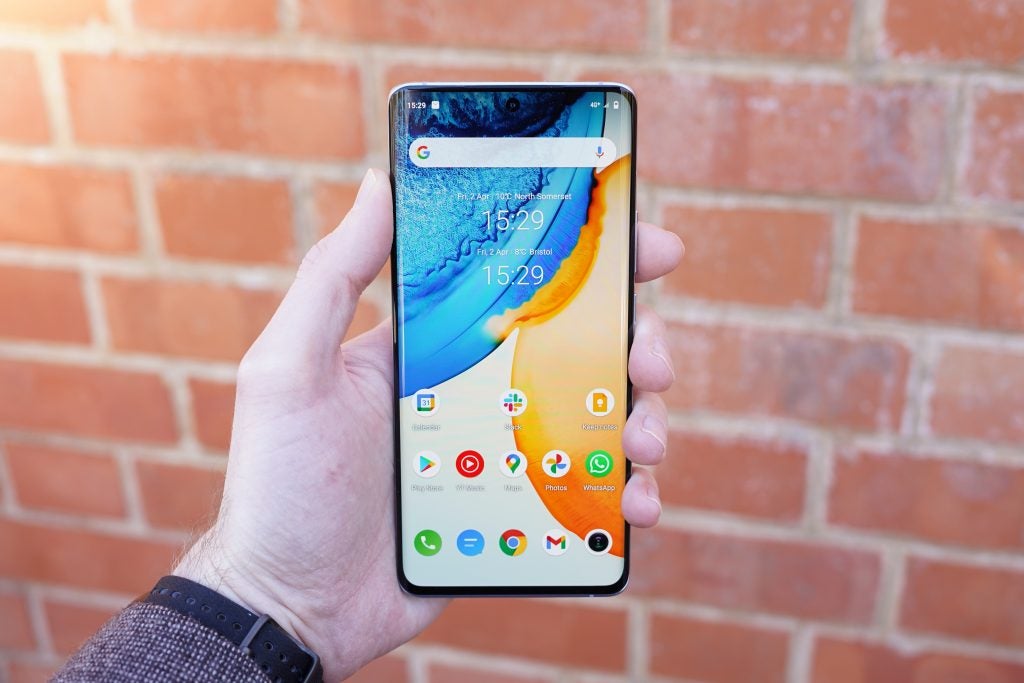
Not that most people are likely to notice, even in demanding applications. Cranking PUBG Mobile up to HDR Graphics and Extreme Frame Rate (the highest any FHD+ Android phone will go) yielded a very playable experience. I played it back-to-back with the OnePlus 9 on the same settings, and while the latter was perhaps a little more fluid, the gap wasn’t huge. Ditto with popular MOBA Wild Rift. With the graphical settings cranked up to the max, the OnePlus hit a fractionally higher frame rate, but the Vivo didn’t feel too far off.
Meanwhile, 256GB is a generous amount of storage to go with – it’s another classy touch from Vivo.
Unfortunately, a little of the X60 Pro’s classy sheen is rubbed off by the abrasive effect of FunTouch 11 – Vivo’s custom Android 11 UI. As before, it’s a slightly gaudy take on Google’s OS.
It’s full of overly fussy elements, such as a screen complaining that your perfectly legitimate app downloads aren’t ‘Vivo certified’, and suggesting that you ‘Reinstall safe version in V-Appstore’. As if downloading Disney+ through the Google Play Store is in some way dicing with death.
The second homescreen, meanwhile, offers a headache-inducing array of 20-odd app icons, only some of which are useful or even appropriate to a Western audience. I should note that the Vivo X51 tidied up some of these extraneous elements, so hopefully an official Western successor will follow suit.
I’m glad that Google Feed is situated to the left of the homescreen, too. Elsewhere, Vivo seems to have leaned towards its OnePlus stablemate’s Oxygen OS with some of its new design flourishes: a stylishly enlarged header font here, a thinned-out brightness slider there. But it doesn’t quite go far enough.
Battery Life
- The phone will comfortably survive a full day of moderate use
- 33W charging is decent, but not the fastest for the money
- Lack of wireless charging is a bit of a downer
I approached the Vivo X60 Pro’s battery credentials with a little trepidation. At 4200mAh, it’s smaller than the 4500mAh cell in the OnePlus 9.
Perhaps more worryingly, it’s smaller than the 4315mAh battery in the Vivo X50 Pro, despite including a more demanding 120Hz display. That would seem to be a recipe for inferior stamina, all things said.
Despite my misgivings, the Vivo X60 Pro holds its own. Whether in the Smart Switch screen refresh rate setting – which changes between 120Hz and 60Hz as the activity dictates – or a locked 120Hz, I found that around five hours of screen-on time would drain the battery to 20%. That means it’s good for a day of moderate to heavy use without too much sweat.
It certainly isn’t a phone for power users or serious gamers, though. On a particularly intensive day of fixed 120Hz usage, which entailed a couple of games of Wild Rift, a game of PUBG Mobile, and a day out snapping 50 photos, I found myself down to 25% by 6pm – just eight hours after unplugging it.
When it does come time to recharge, you’ll get Vivo’s FlashCharge 2.0 brick in the box. It offers the same 33W fast charging as the X50 Pro, but what seemed quite speedy in mid-2020 feels quite run-of-the-mill in early 2021, with the OnePlus 9 and the Oppo Find X3 Neo laying on an impressive 65W equivalent. Nevertheless, it remains better than the Samsung Galaxy S21’s 25W and the iPhone 12’s 20W charging, and neither of those come free in the box.
One thing those two phones have, along with the OnePlus 9, is support for wireless charging. It feels like a bit of an omission here.
There are lingering question marks over its price and availability I won’t be scoring the Vivo X60 Pro yet, but as it stands this is a unique upper-mid-range/entry-flagship phone with a remarkably stable camera, a highly desirable design and solid performance.
You should buy the Vivo X60 Pro if…
- You like your phones slim and stylish
Not every phone has to be a huge lump of blandness, as the Vivo X60 Pro’s sleek, suave design shows.
- You want rock-steady shots and videos
Those whose snaps and videos typically devolve into a shaky mess will love the X60 Pro’s uncanny poise, courtesy of a unique gimbal system.
- Telephoto shots still matter to you
It isn’t uncommon for mid-range phones to ditch the telephoto lens, but the X60 Pro keeps one around – and it’s pretty decent too.
You shouldn’t buy the Vivo X60 Pro if…
- You’re a power-obsessed gamer
The Vivo X60 Pro isn’t power-deficient by any means, but it’s essentially running on 2020 tech. In particular, its GPU falls well behind the OnePlus 9 and the Galaxy S21. - You want a slick, tasteful UI
FunTouch is fully featured and highly customisable – but it’s also busy and bloated. - You want wireless charging
It’s quite possible to get a phone with wireless charging at this price – the OnePlus 9 and the iPhone 12 mini spring to mind – but the Vivo X60 Pro isn’t among them.
How we test phones
We test every mobile phone we review thoroughly. We use industry standard tests to compare features properly and we use the phone as our main device over the review period. We’ll always tell you what we find and we never, ever, accept money to review a product.


